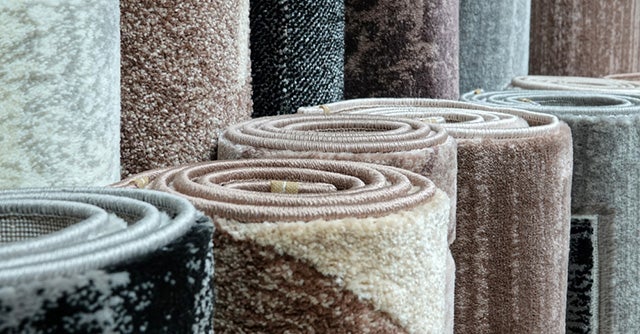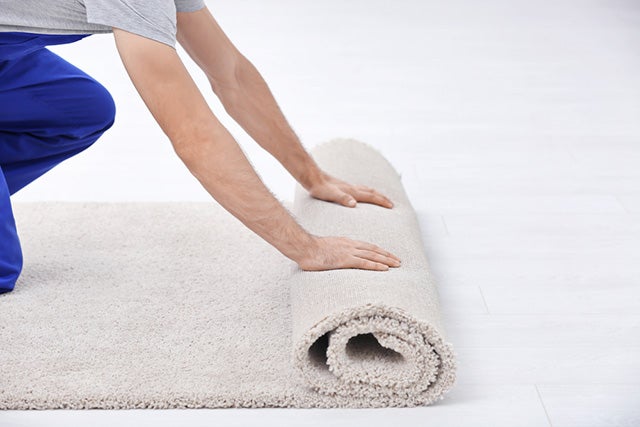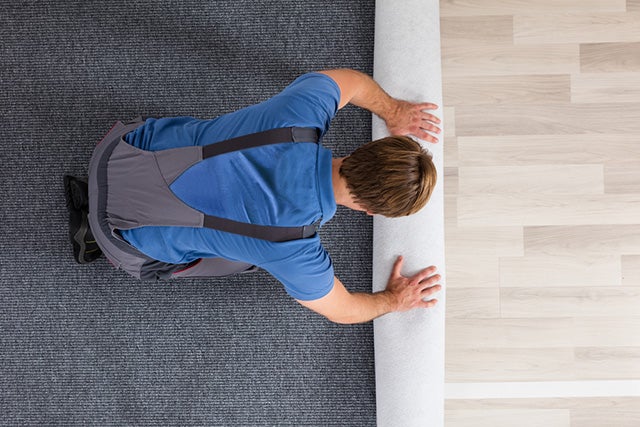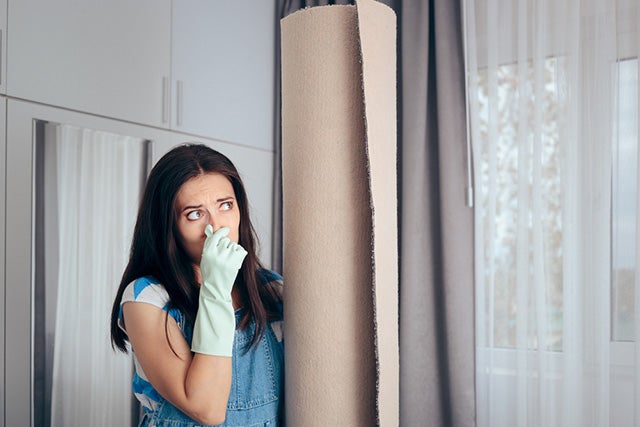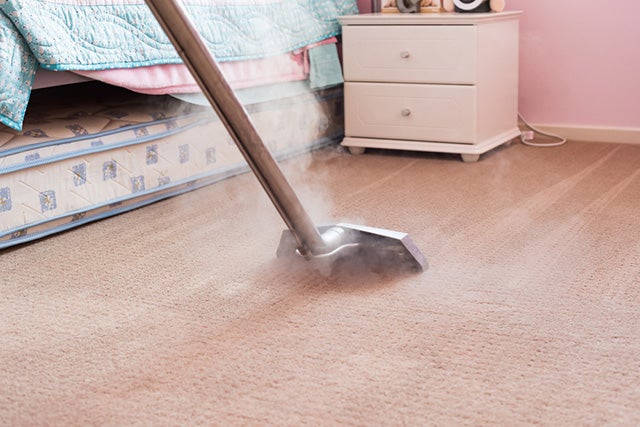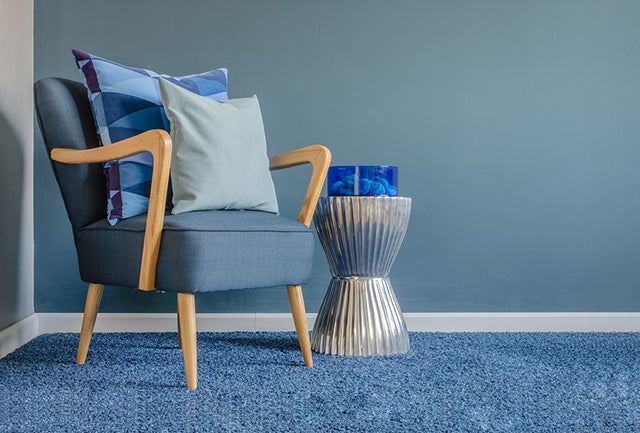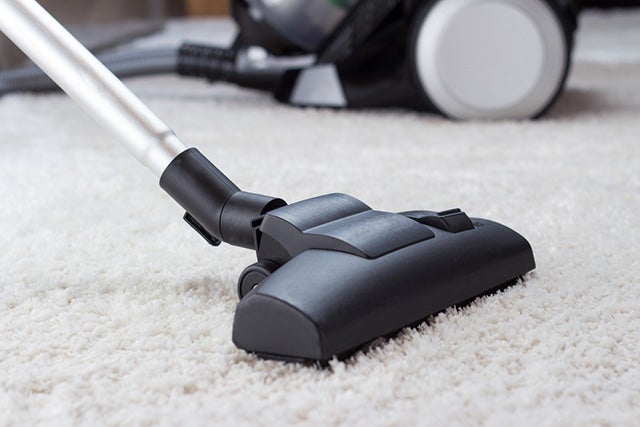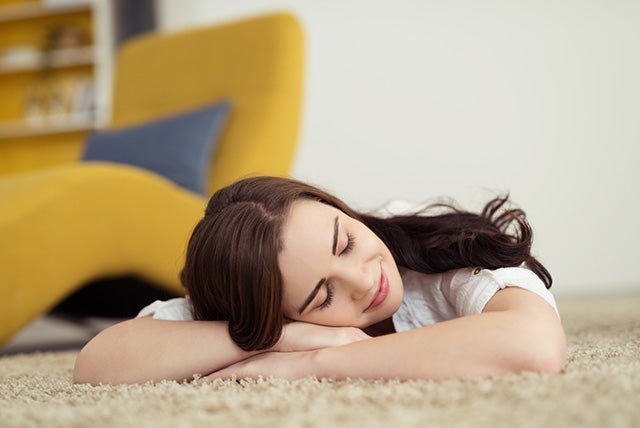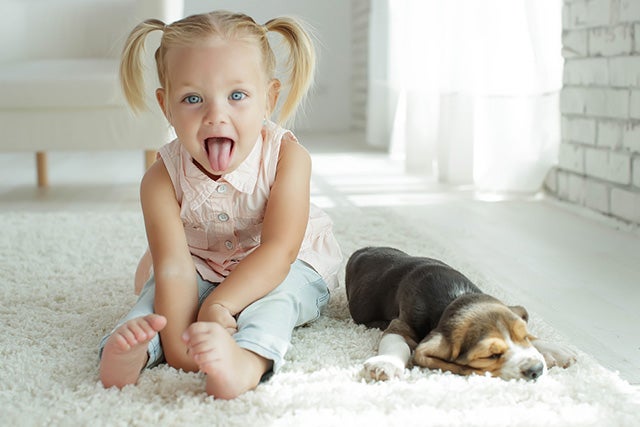You’re remodeling and redecorating and you put in new carpeting. Now what?
Web searching for new carpeting will bring up an entire myriad of opinions about the reasons why you can use your space immediately, or why you shouldn’t move yourself into a newly carpeting area without letting it rest. However, these opinions are generally just that: opinions.
If you’re concerned about the safety of your new carpet, you don’t need to be alarmed – but you should be informed. This article helps explain what you need to know about new carpeting, and how to keep you and your family safe and comfortable.
What are Carpets Made of?
Carpets are made of various layers. The top layer is the pile and is the surface upon which you walk. There are also usually two layers of backing to keep your carpet uniform and level. Thicker layered carpeting may be glued to the flooring, while thinner layers are generally placed over a carpet mat when laid and stretched to provide added cushioning and comfort.
Most carpets are made of a polyester, nylon, polypropylene, and acrylic fiber blend and backed with a polypropylene. The layers are attached to one another using various adhesives. Various dyes are also used for coloring and patterns.
Why Does New Carpet Smell?
After the layers dry, carpets are rolled and stored until purchase. Synthetic materials give off gasses, and this storage technique doesn’t allow them to dissipate easily. When unrolled they are released into the room it is laid within.
What Chemicals are in a New Carpet?
Carpets are often used with a carpet pad or underlayment made of urethane and polyurethane components. Together, the synthetic fibers, adhesives, and underlayment release a number of chemicals called VOCs.
What are VOCs?
VOCs are volatile organic compounds that have a high vapor pressure and low water solubility. They off-gas from many human-made materials and can create short and long term health complications. They dissipate quickly in well ventilated areas and outside but concentrate indoors to levels that can be agitating, and even dangerous to humans and pets.
Dyes and adhesives are amongst the worst smelling, as well as contribute to toxic fumes that can trigger breathing issues and feelings of lightheadedness.
Can a New Carpet Be Aired Out?
New carpets can most definitely be aired out and should be aired out. Usually most VOCs will dissipate within 24 to 48 hours, and it is suggested to allow 2 to 3 days for complete gas release. However, you can choose to lay carpet during the times of year when it is much easier to keep your windows open and fans blowing to help speed up the process.
You may want to check out: Best Carpet Steam Cleaner
Ways to Lower VOC Emissions
You can also ask your installer to unroll and air out your carpeting before it arrives. Some installers will do this for free, while others may charge a small price.
There are other steps that can be taken to help speed up the process as well and provide peace of mind for safety purposes. For example, you can steam clean the carpet once the flooring adhesives have dried – which usually takes about 24 hours.
Choosing felt padding can also help reduce the VOC emissions. You can also ask for low emitting, nonsolvent adhesives.
Using an air purifier, as well as carbon filtration to trap gasses, is also very helpful and should be used on the months following installation to remove any lingering odors or gasses.
When Can I Place Furniture on a New Carpet?
If your carpet has been glued down you need to wait at least 24 hours before placing furniture on the carpet. Moving furniture onto a newly glued carpet can shift it and create compression spots that may not lift once the furniture is removed. The compression on the newly laid carpet can also damage the floor underneath.
How Long Before I Can Vacuum my New Carpet?
Just like steam cleaning and furniture movement, you want to wait at least 24 hours before vacuuming your new carpets. The movement can shift the underlayment and create ridges, folds, and gaps that might not show up right away.
Vacuuming a carpet as soon as you can is a good idea, however. There will be small carpet fibers that naturally shed off during the installation process, as well as within the first few weeks of regular foot traffic. Taking up those fibers as they break off keeps them from getting into the air.
When Can I Sleep in a Room with a New Carpet?
As mentioned, you should provide 24 hours before placing any furniture on a newly laid carpet, and 2 to 3 days of airing out before sleeping in it. Of course you may be able to shorten this time by using some of the above mentioned tips to dissipate odors and chemicals more quickly.
Running a vacuum and air purifier with a carbon filter regularly after installation can provide peace of mind as well for any lingering chemicals or odors.
Can a Child or Baby Sleep in a Room with a New Carpet?
Exercise caution with children and babies after a new carpet is installed. The offgassing of synthetic materials and adhesives can be particularly problematic for developing respiratory systems and can even create neurological disruptions. Carpet fibers can also irritate delicate skins if they are laying or crawling upon it before vacuuming.
Always wait at least 2 to 3 days before allowing a child to sleep in a room with a new carpet, and make sure to provide good ventilation through that time period. It is a good idea to use an air purifier as well.
Is New Carpet Safe for my Pets?
Pets can be even more sensitive to chemicals than humans, and it is important to keep pets off of new carpeting for a few days – or until you’ve had a chance to vacuum and allow it to air out.
You may be interested in: Best Carpet Cleaners
Wrapping it Up
A new carpet doesn’t have to be a stressful addition to your house, but knowing the issues it can create in advance can help you make decisions about its installation, and plan properly for when it arrives.
New carpet and the adhesives used have the potential to off gas VOCs which can be harmful to your respiratory system, as well as to your neurological system. You can minimize the issues they can create with early planning concerning airing out the carpet and setting up good ventilation techniques.
New carpet takes at least 24 hours of set time to make sure the adhesive is dried, and in the meantime you can open windows and run air purifiers. Try to allow at least 2 to 3 days of good air circulation to occur before sleeping in a room with new carpeting.
Photo credit: Richard Peterson/Shutterstock;
Africa Studio/Shutterstock; Nicoleta Ionescu/Shutterstock;
Halfpoint/Shutterstock; whitejellybeans/Shutterstock;
Andrey_Popov/Shutterstock; Alfred Gruener/Shutterstock;
All About Space/Shutterstock; Alena Ozerova/Shutterstock;
Nina Buday/Shutterstock
